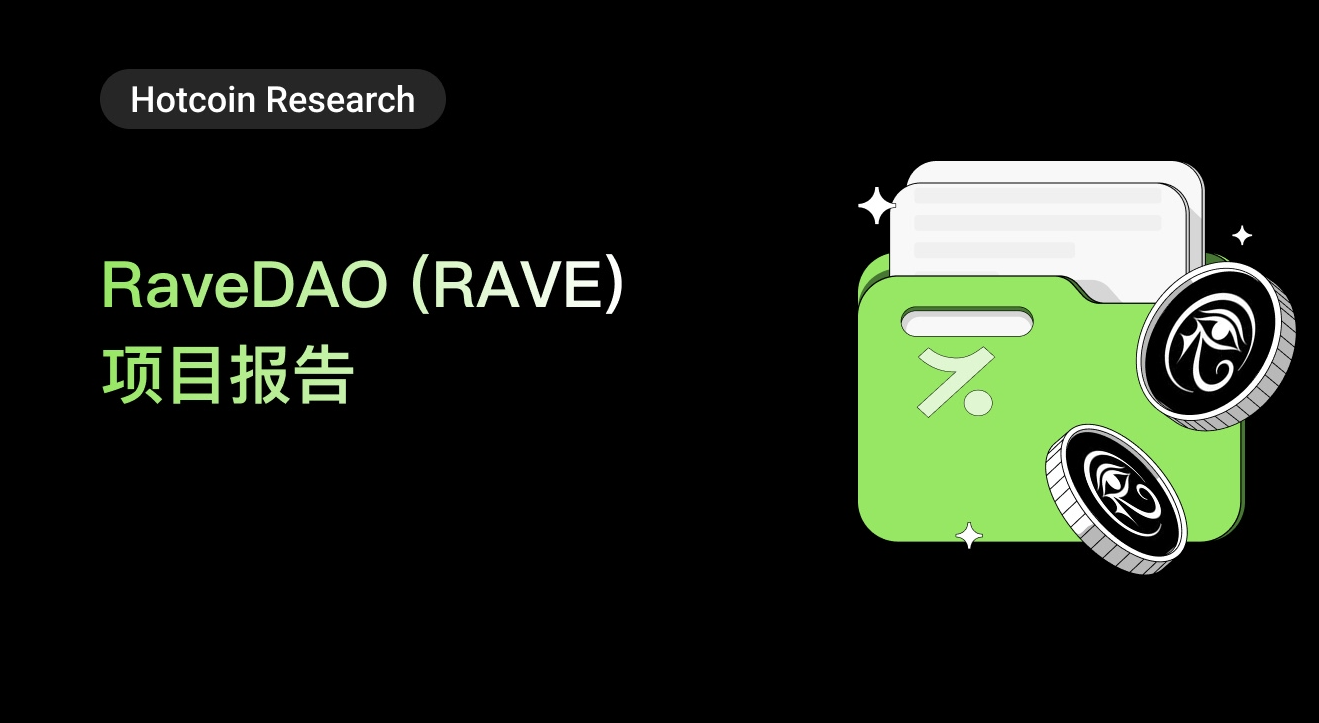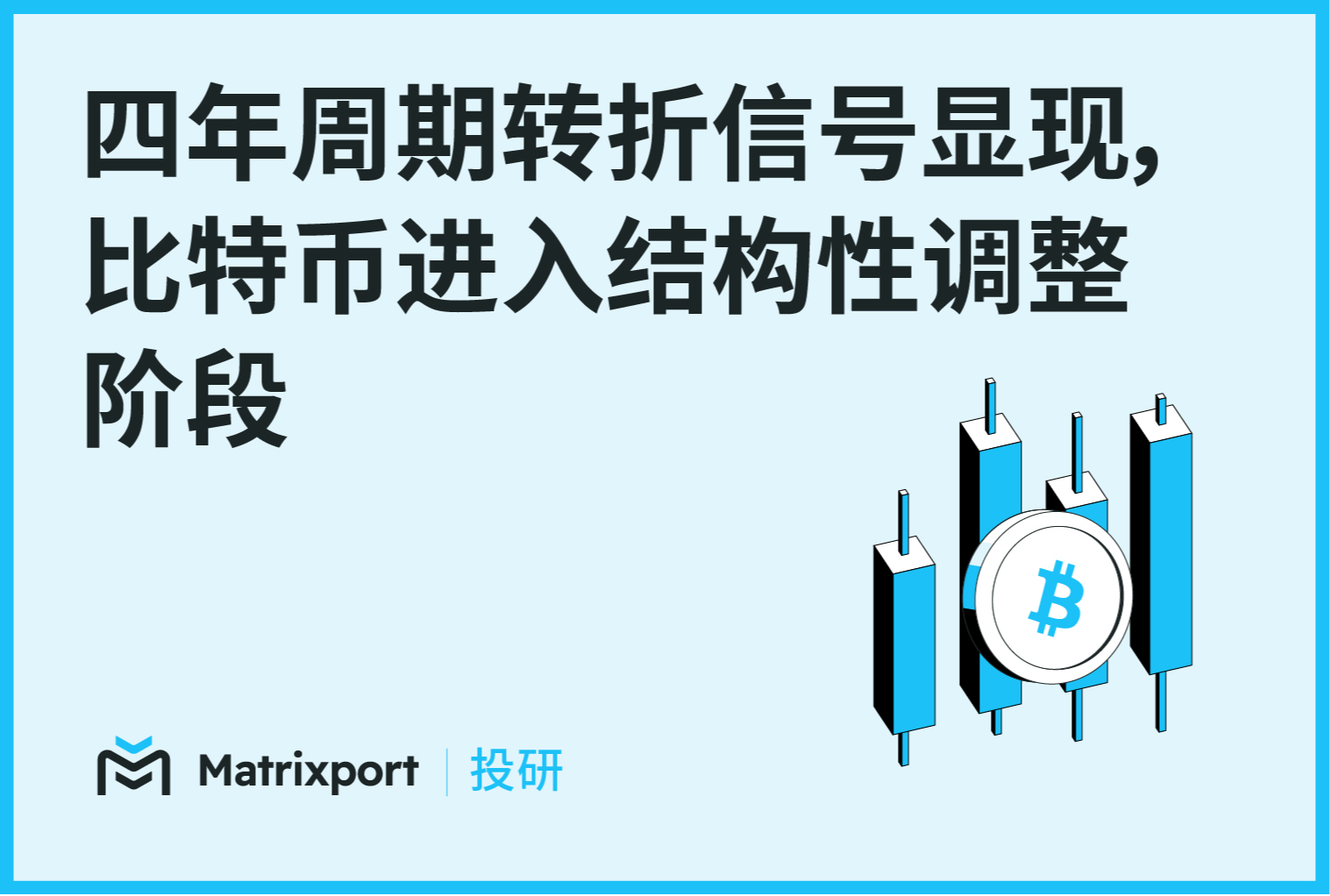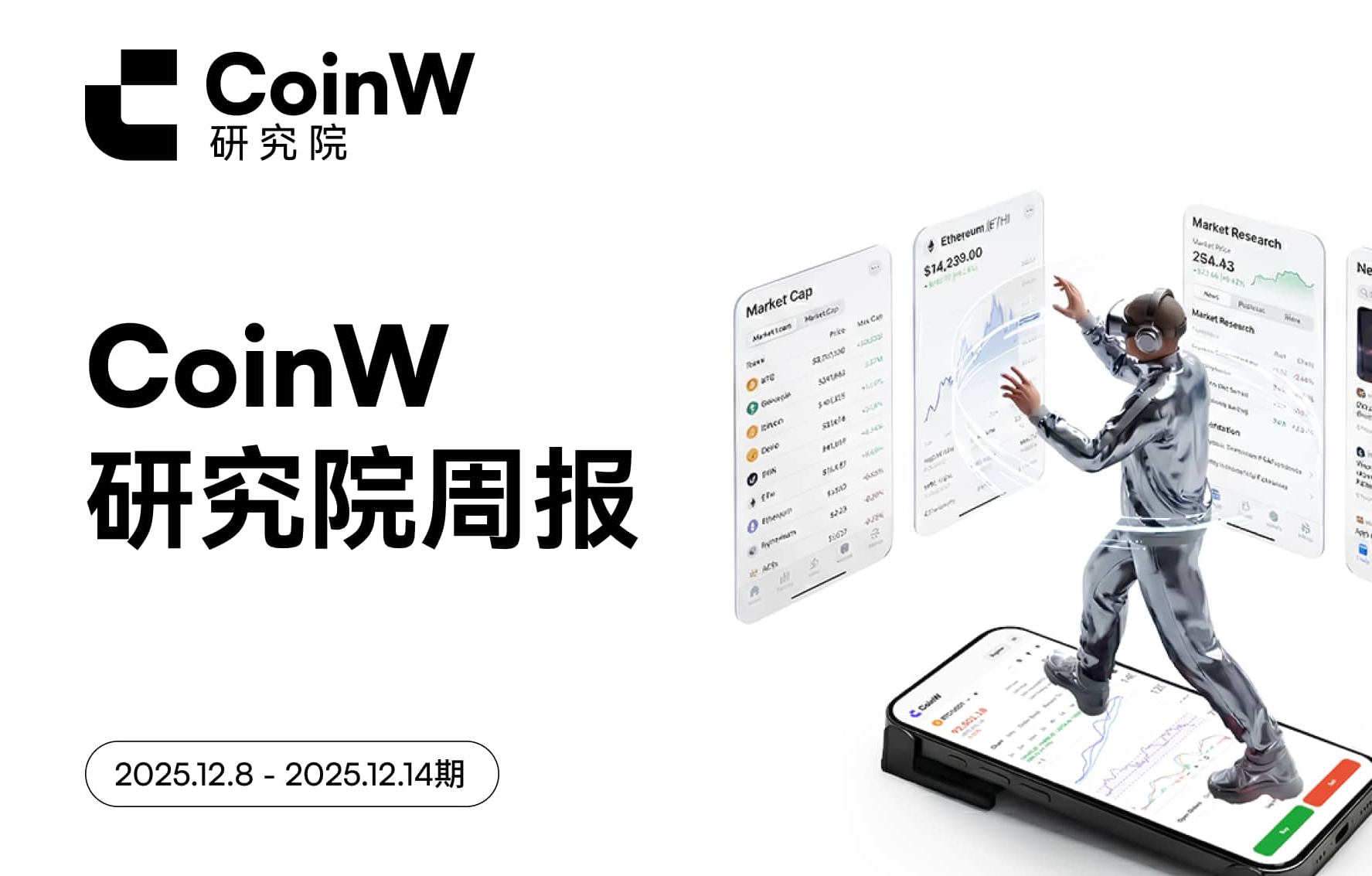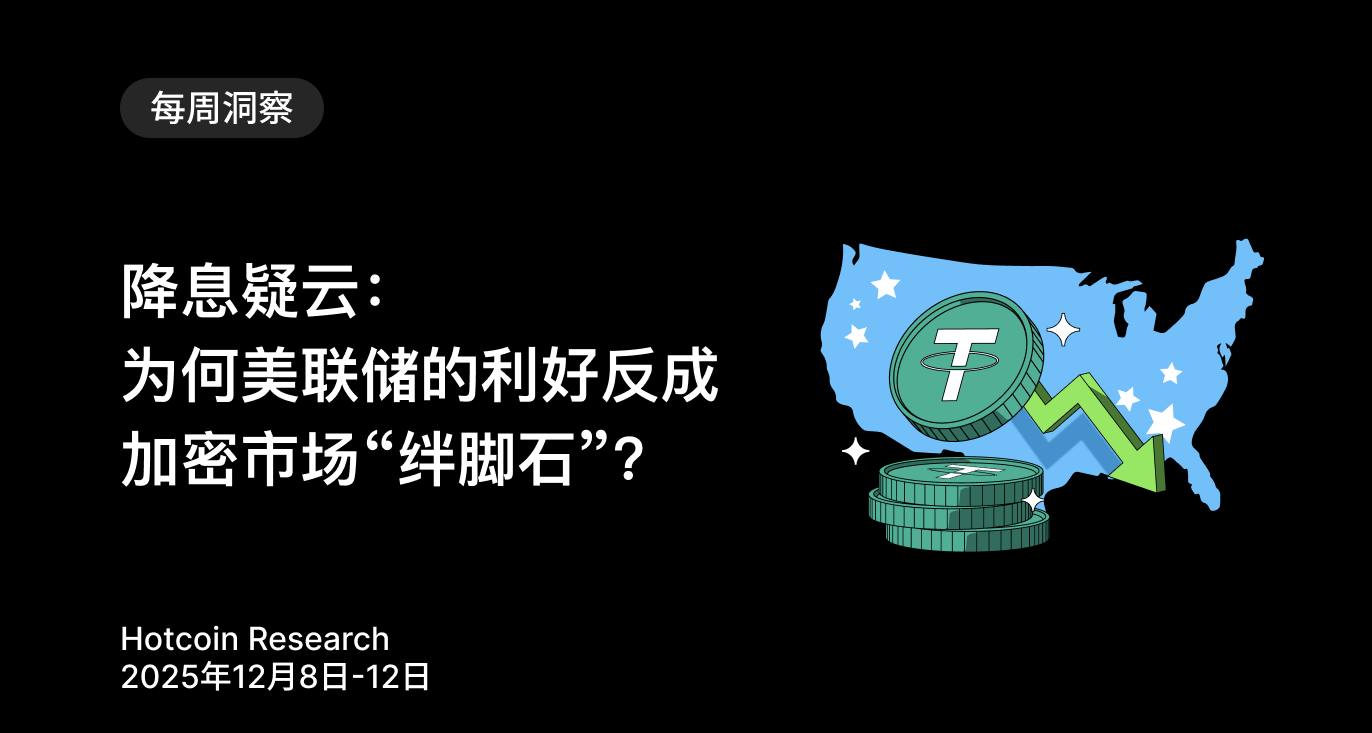Introduction
Recently, the stablecoin market has experienced a dramatic situation: on one hand, Ethena's USDe plummeted to $0.65 due to a flash crash, and Stream Finance's xUSD faced liquidation, dropping over 57%, triggering a crisis of trust in stablecoins; on the other hand, giants like Tether, Circle, Ethena, and Stripe have launched their own "stablecoin-specific public chains," stirring the entire crypto payment landscape. In the past, Tether and Circle had to pay high on-chain fees to networks like Tron and Ethereum, but now they choose to build their own networks or support dedicated public chains, effectively creating their own "highways" and terminal networks, keeping channel profits within their systems. These chains not only allow users to pay Gas with USDT/USDC, promise "zero fees," and incorporate KYC and auditing modules, but also continuously spark market discussions. Stablecoins seem to be transforming from a type of asset into the main character of a complete "on-chain currency infrastructure."
This article will systematically outline the characteristics of stablecoin chains, their impact on the crypto market, review the most notable stablecoin public chain projects currently, deeply analyze the ecological layout and data performance of representative projects like Plasma, Stable, Arc, and Converge, explore how stablecoin chains reshape the closed-loop logic of stablecoin issuance, circulation, and settlement, as well as their potential impacts and challenges on the DeFi ecosystem, mainstream public chains, payment networks, interest rate markets, and even global financial regulation. It aims to help investors understand the logic, grasp the pulse, and find opportunities in this new competition where "chains are born for stablecoins."
Overview of Stablecoin Chains
1. Characteristics of Stablecoin Chains
In simple terms, stablecoin chains are blockchain networks specifically tailored for the issuance and trading of stablecoins. Compared to general-purpose chains like Ethereum and Solana, stablecoin public chains make targeted trade-offs in their architecture:
Stablecoins as Core Fuel: Stablecoin public chains typically use the stablecoin itself as Gas fees, rather than volatile tokens. For example, Circle's Arc uses USDC to pay on-chain fees, while Tether's Stable chain uses USDT for Gas. This allows users to avoid back-and-forth conversions, speeding up transactions and avoiding exchange rate risks.
High Performance and Low Cost: These chains do not pursue the complexity of general smart contracts but instead optimize for stablecoin transactions, aiming for faster confirmations and lower fees. The consensus mechanism often employs improved BFT or PoS solutions, achieving sub-second final confirmations with TPS reaching thousands, meeting large-scale payment demands. Some chains even offer zero fees or near-zero cost transfer experiences to attract users.
Built-in Compliance and Privacy: To gain institutional and regulatory recognition, stablecoin chains incorporate KYC/AML tagging, auditable accounts, transaction whitelists, and other features at the base layer. For instance, the Arc chain uses a permissioned PoA consensus, natively supporting real-name tagging of accounts, complying with EU MiCA and US stablecoin regulatory frameworks. It also offers an optional privacy mode, allowing institutions to protect transaction details while meeting regulatory scrutiny.
Seamless Fiat On/Off Ramps: Stablecoin public chains often have tight integration with traditional financial interfaces. For example, the Stable chain natively integrates fiat on/off ramp channels, allowing enterprise users to conveniently complete exchanges and settlements between fiat currencies like USD and USDT on-chain. Circle's Arc is deeply linked with its own Circle Cross-Border Payment Network (CPN) and Cross-Chain Transfer Protocol (CCTP), attempting to create an "operating system" for a global stablecoin clearing network.
2. Impact of Stablecoin Chains on the Crypto Market
The rise of stablecoin public chains is quietly reshaping the landscape of the crypto market, bringing a series of impacts:
Changes in Stablecoin Settlement Patterns: For many years, the Tron network has carried the most USDT transactions globally due to its low fees, being regarded as the de facto USDT clearing network. Ethereum has been the main operating ground for stablecoins like USDC. However, with the emergence of dedicated chains like Plasma, Stable, and Arc, a large number of stablecoins may migrate from existing networks to these stablecoin networks. For Ethereum, this could reduce its stablecoin transaction volume and fee income, but it may also alleviate network congestion; for Tron, the impact is greater, as its survival relies on USDT transfer business, which may be diverted or even replaced by Tether's own chain.
Changes in Fee and Fuel Token Demand: Stablecoin chains use stablecoins as Gas, impacting the existing public chain token economies. On the Arc and Stable chains, users do not need to purchase ETH or TRX to pay fees, which lowers transaction costs and entry barriers, but also reduces the demand for Gas tokens like ETH and TRX. All operations on the chain can be completed using stablecoins without the need to hold additional tokens, further solidifying the position of stablecoins as the universal pricing unit in the crypto world.
DeFi Ecosystem and Innovation: Stablecoin chains themselves will form new DeFi ecosystems; for example, projects like Aave and Pendle on Plasma have quickly accumulated TVL. Additionally, as chains like Arc and Converge are closer to compliant institutions, hybrid DeFi products may emerge in the future: part of the funding may come from regulated institutions, while another part comes from crypto-native users, jointly participating in a protocol. On the other hand, Ethereum's DeFi status may face pressure from being siphoned off. A multi-layered DeFi landscape may form in the future: the bottom layer cleared by stablecoin chains like Arc, the upper layer carrying complex applications like Ethereum, and settling through bridges with stablecoin chains. This architecture is expected to enhance overall efficiency, but the premise is achieving secure and smooth interoperability between different chains.
Stablecoin Yields and Interest Rate Markets: New types of stablecoins represented by Ethena's USDe provide endogenous yields to attract users, posing potential competitive pressure on non-interest-bearing stablecoins like USDT and USDC. Stablecoin chains have more room to design interest rate products; for example, Circle has launched USYC, which is linked to government bond rates, and Tether may introduce accounts providing interest for institutions through the Stable chain, allowing for more flexible embedding of yield distribution mechanisms. This will somewhat change the inherent image of stablecoins as "zero interest," promoting the development of on-chain dollar interest rate markets.
Major Stablecoin Chain Analysis
Currently, the most notable new chains in the stablecoin public chain space include Tether's Plasma and Stable, Circle's Arc, Ethena's collaboration with Securitize on Converge, and Stripe's Tempo.
1. Plasma: A USDT Network for Zero-Fee Payments

Source: https://www.plasma.to/
Background and Team: Plasma is not a project directly operated by Tether but has received strong support from Tether and Bitfinex. The team completed a $24 million funding round in February 2025, with investors including Framework Ventures and Tether CTO Paolo. It is positioned as "the payment highway for stablecoins," particularly targeting emerging market users and high-frequency small transaction scenarios.
Key Features: Plasma's biggest selling point is zero fees for USDT transfers. Ordinary users can transfer USDT on the chain without paying Gas fees, achieving a frictionless experience similar to traditional digital payment apps. To achieve this, Plasma introduces a Paymaster mechanism: the backend pays for Gas or covers costs through other revenues, thus exempting front-end users from fees. Additionally, Plasma supports multi-asset payment for Gas, allowing users to pay with USDT or even BTC.
Launch Data Performance: The Plasma mainnet officially launched in September 2025, and within just a few weeks, its total locked value (TVL) in DeFi briefly ranked among the top four in the industry, reaching $8.4 billion. However, it should be noted that a significant portion of Plasma's early TVL came from liquidity mining rather than real payment activities. Data shows that about 65% of USDT on Plasma is deposited into lending protocols like Aave to earn yields, with the on-chain stablecoin turnover rate far lower than that of networks like Tron. The price of the XPL token quickly fell after an initial hype: within a month of launch, the price dropped by 70% from its peak. This reflects that Plasma currently still mainly plays the role of a "high-yield farm," and real payment circulation application scenarios have not yet fully emerged.
2. Stable: Tether's USDT Main Chain for Institutions
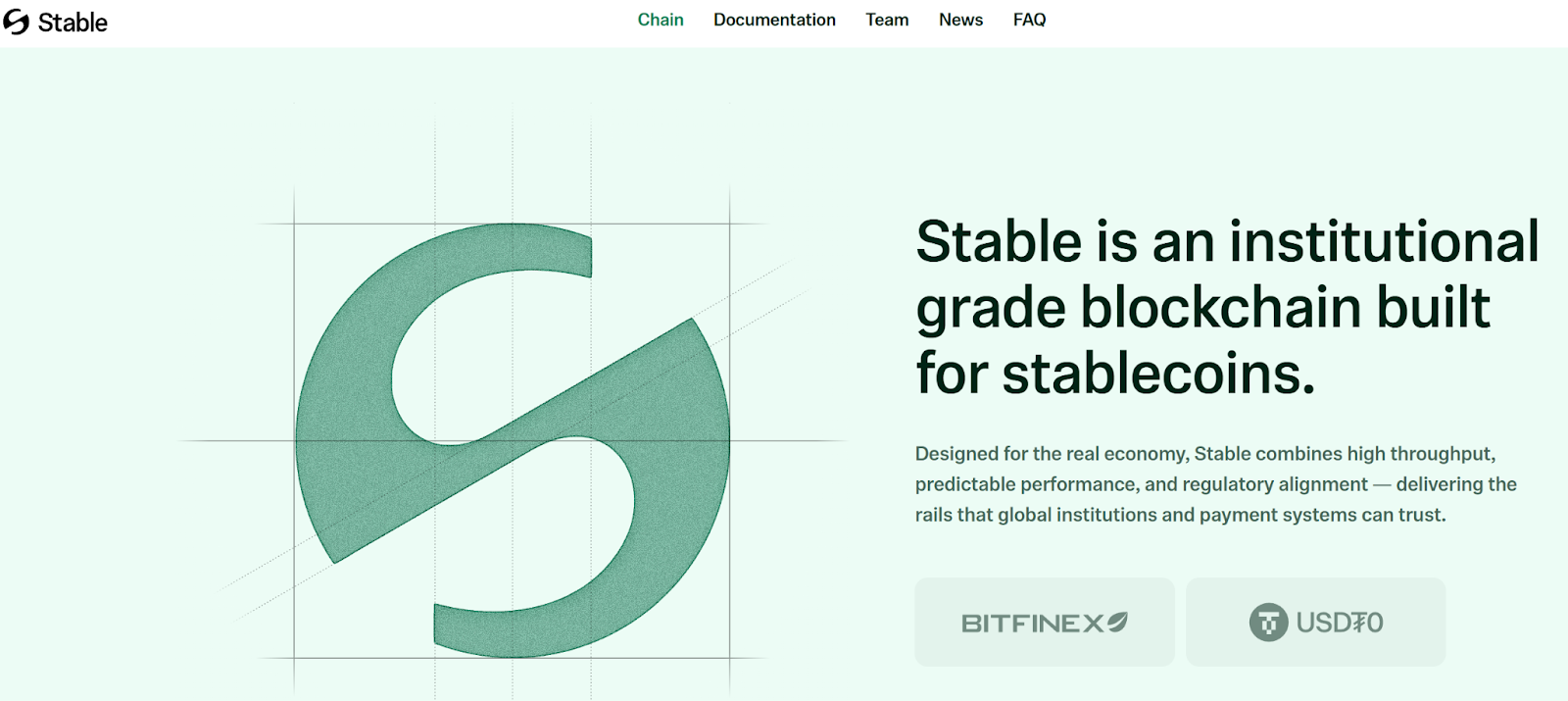
Source: https://www.stable.xyz/
Background and Positioning: Stable is a new public chain led by Tether and its sister company Bitfinex, regarded as one of the most important future infrastructures for the USDT ecosystem. The vision of the Stable chain is to create a high-performance, scalable, and compliance-friendly dedicated network for USDT, serving institutional-level scenarios such as exchanges, market makers, and large merchants, aiming to upgrade USDT from a simple stablecoin to an enterprise-level digital cash solution.
Functional Features: The Stable chain natively uses USDT to pay Gas fees while introducing a dual-token mechanism—gasUSDT and USDT0: gasUSDT is the fuel token used for billing on the chain, while USDT0 is a "fully chain universal" USDT pegged 1:1 to standard USDT. Peer-to-peer transfers of USDT0 are completely free of Gas fees, further lowering the usage threshold. Stable also designs dedicated block space for enterprises, ensuring that large institutional transactions can receive priority packaging and stable confirmation times even during network congestion. Future plans also include confidential transfers (using zero-knowledge proofs to hide transaction amounts while retaining auditability) to meet the dual needs of privacy and compliance for enterprises.
Progress and Controversy: On October 23, the first phase of the Stable pre-deposit activity faced controversy due to "insider trading" issues, with $825 million in pre-deposits being emptied in seconds, and whales reportedly entering the market early with $700 million before the official announcement. The second phase of the pre-deposit activity will start on November 6, accepting qualified deposits of up to $500 million. On November 4, Stable announced the official launch of its public testnet. Currently, the testnet has opened multiple features to developers, including: public RPC endpoints for network interaction, a faucet for testing USDT, a block explorer for tracking contracts and on-chain activities, and a system module supporting native USDT transfers and fee settlements. Stable stated that this testnet will lay the foundation for future mainnet deployment and ecological application development.
Tether supports both Plasma and Stable chains, which revolve around USDT but have different focuses. Plasma is developed by an external team, using Rust language and innovative consensus, aiming for broad coverage of the global retail market and zero-fee payments. Stable, on the other hand, is directly managed by the official team, emphasizing services for large institutions and providing customized enterprise features to meet the high-performance and predictability needs of exchanges and merchants. In the future, Plasma and Stable may form a complementary relationship: Plasma will focus on small-scale public payments, while Stable will consolidate its position in the institutional settlement field, together reinforcing USDT's dominance.
3. Arc: A Compliance-Focused Stablecoin Network Launched by Circle

Source: https://www.arc.network/
Background and Strategy: In August 2025, the US compliance stablecoin issuance giant Circle announced the launch of its self-developed open-source L1 public chain, Arc. The vision of Arc is to create the "iOS system" for stablecoins: by controlling the underlying chain, the issuance, cross-chain, and settlement of stablecoins like USDC will be completed on its own network, thus upgrading to a global digital dollar clearing center. After the launch of Arc, Circle can further integrate its cross-border payment network (CPN), cross-chain protocol (CCTP), yield-bearing stablecoin (USYC), and other products with Arc to build a closed loop.
Functionality and Ecological Vision: Arc was designed with European and American regulatory requirements in mind: it complies with EU MiCA regulations and follows the framework of the GENIUS Act. The account system on the Arc chain has built-in KYC/AML tagging features, providing an optional privacy mode while being auditable for regulators. The core design of Arc is to become a cross-chain stablecoin clearing layer, aiming to connect the flow of funds across multiple chains and currencies. At the application level, Arc is not just a base network but also aims to incubate a native stablecoin application ecosystem.
Progress and Prospects: Currently, Arc has launched its testnet, with over 100 participating institutions, including BlackRock, Visa, HSBC, and other financial institutions and tech companies. In the future, Arc may have the most potential to become the "officially recognized stablecoin chain." If Arc succeeds, it will elevate the competition of stablecoins from the application layer to the settlement layer, consolidating USDC's advantage over USDT in the compliance field.
4. Converge: An Institutional Chain Connecting TradFi and DeFi

Source: https://www.convergeonchain.xyz/
Background and Vision: Converge was jointly launched by Ethena and the tokenization platform Securitize in 2025. Converge targets the pain point of "how institutions can safely and compliantly participate in DeFi," aiming to bridge traditional finance (TradFi) and decentralized finance (DeFi) to create a hybrid chain that is both open and compliant.
Three-Layer Parallel Architecture: The biggest innovation of Converge is the proposed "three-layer parallel" on-chain architecture:
DeFi Layer (Public Layer): Completely permissionless and open, anyone can use stablecoins like USDe to participate in decentralized trading, lending, and other protocols without KYC. This layer operates similarly to a regular public chain, maintaining the openness inherent to crypto.
TradFi Layer (Permissioned Layer): For licensed institutions, participants must complete KYC/AML verification before use. This layer provides compliant versions of assets parallel to the DeFi layer, such as iUSDe (institutional version of USDe) and USDtb. USDtb is reportedly a compliant dollar token issued in collaboration with the regulated custodian Anchorage, meeting the requirements of the US Stablecoin Act. Both layers share liquidity, ensuring that institutional funds can interact with open market funds.
Asset Layer (RWA Layer): Provided by Securitize, this layer issues and trades KYC-compliant security tokens on-chain, including bonds, stocks, notes, and various real-world assets. This layer operates in parallel with the previous two layers, utilizing shared underlying settlement. However, only institutions that have passed compliance verification can operate in this layer.
The three-layer architecture is independent yet shares liquidity, ensuring that both retail and institutional participants can trade within the same ecosystem while meeting different regulatory requirements. This design is considered the true differentiator for Converge, making it a hybrid chain that serves both retail DeFi and institutional TradFi.
Progress and Outlook: As of now, Converge is still in the internal testing phase. The success of Converge largely depends on the degree of acceptance by institutions. However, it is undeniable that Converge offers an intriguing vision—a layered on-chain financial market where ordinary investors and Wall Street institutions can meet their needs while sharing liquidity. If this model proves viable, it could have a profound impact on stablecoins and the entire crypto market.
5. Tempo: A Payment Network Supported by Stripe
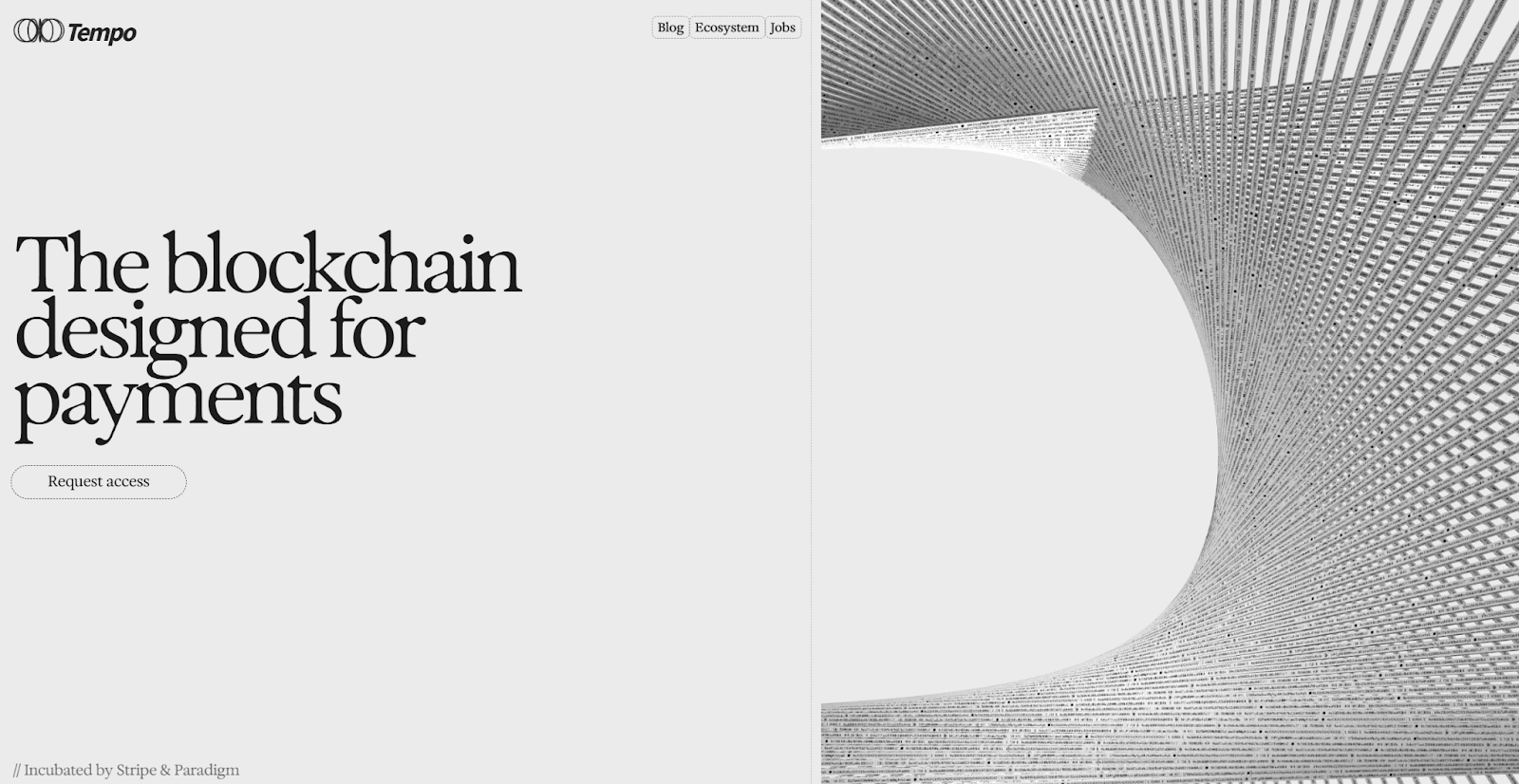
Source: https://tempo.xyz/
Background and Positioning: Tempo, launched by Stripe in collaboration with Paradigm, is a blockchain focused on payments. The logic behind Tempo is simple: Stripe has a vast number of merchants and end-users, and providing a stablecoin settlement network would significantly reduce global payment costs. The biggest feature of Tempo is its "no-token" design; it has not issued any native tokens, and network fees can be paid with any mainstream stablecoin. This makes Tempo's economic model closer to traditional payment systems.
Technology and Collaboration: To facilitate financial institutions' access, Tempo integrates the ISO 20022 standard payment message format, allowing on-chain transfers to carry information that can be recognized by traditional systems like banks. This is crucial for meeting anti-money laundering and auditing requirements and indicates that Tempo has considered compatibility with the banking system from the outset. During its development, Tempo invited a number of heavyweight partners as design consultants, including OpenAI, Visa, Deutsche Bank, Shopify, and Standard Chartered.
Progress and Prospects: Tempo is currently in the private testnet phase, with Paradigm co-founder Matt Huang serving as Tempo's CEO. Tempo's advantages lie in its no-token, all-stablecoin model, which reduces regulatory friction, as it will not be seen as issuing security tokens and is easier to gain merchant acceptance. If Tempo successfully launches, it will provide Stripe network merchants the opportunity to receive payments in stablecoins at nearly zero cost, which would be a significant disruption to the traditional payment landscape.
Opportunities and Challenges for Stablecoin Chains
While the wave of stablecoin public chains is surging, we also need to calmly examine the opportunities and challenges they face:
Opportunities:
Incremental Market Beyond Traditional Finance: Stablecoin public chains target the $20 trillion global payment clearing market. Even capturing a small portion of this market would be a massive increment. Particularly in areas like cross-border remittances and payments in emerging markets, stablecoin chains are expected to provide unprecedented low-cost solutions.
Upgraded Revenue Models for Issuers: For stablecoin companies, past revenues mainly came from reserve interest and a small amount of fee sharing. By mastering public chains, they can obtain new revenue sources from on-chain transaction fees, cross-border exchange rate differences, and more. For example, if Circle's Arc succeeds, it will extract small but massive fees from global USDC clearing, with total revenues expected to surpass pure interest income.
Technological Innovation and Standard Setting: Stablecoin chains are in their infancy, presenting an opportunity for various teams to stake their claims and set industry standards. If a particular solution gains widespread recognition, it could become the foundational standard for future digital payments. This would not only benefit the expansion of related project ecosystems but also enhance the country's voice in the digital finance sector.
Integration with Traditional Finance: Initiatives like Converge have opened new avenues for bringing traditional assets on-chain. Once RWA successfully circulates on-chain, it may trigger financial institutions to follow suit, moving more bonds, fund shares, and other assets to on-chain settlements, exponentially increasing market size and influence.
Enhanced User Experience: The benefits that stablecoin chains bring to ordinary users are tangible: no Gas fees for transfers, sending USDC via mobile wallets is as simple as sending a WeChat red envelope; cross-chain transactions can be completed with a single click without needing cross-chain bridges; coupled with improvements like account abstraction and privacy addresses, using blockchain will feel more like using internet applications. These improvements help attract more users from outside the crypto space to accept crypto technology, lowering the barriers to large-scale adoption.
Challenges:
Network Effects and Cold Start: A payment network needs sufficient merchant support as well as a large user base. Arc and Stable need to integrate systems with numerous partners; Tempo requires Stripe to direct its millions of merchants to the platform; although Plasma has a large user base, the challenge lies in truly getting these USDT used for consumption rather than just for rewards.
Regulation and Trust: Although these chains claim to be more compliant, regulators may not be convinced. Especially for Tether-related chains, Tether has faced scrutiny in the past, and building its own chain could trigger more stringent reviews. While Arc has strong compliance, if Circle becomes embroiled in political or legal disputes, the assets on the Arc network could also be affected. Additionally, most stablecoin chains have highly concentrated validation nodes in the early stages, often controlled by companies, which may lead traditional crypto users to question their decentralization and security.
Security Risks: New public chains mean new attack surfaces. Many chains, especially those using cross-chain mechanisms or connecting with traditional systems, can easily become targets for hackers. Any significant security incident (such as a bridge hack or compliance layer data leak) could destroy the confidence of users and institutions. Moreover, some chains sacrifice decentralization for performance, which raises security concerns. Balancing security and efficiency will test the capabilities of the teams involved.
Market Volatility and Sustainability: These chains have gained significant attention this year, but the crypto market changes rapidly. If a bear market occurs or interest rate environments shift, the growth of stablecoins may slow, leading to reduced on-chain incentives and potential mass user attrition. For example, the price drop of XPL as an incentive token led to a rapid outflow of TVL from Plasma. This indicates that relying solely on subsidies is not a long-term strategy; real usage scenarios must be established within the subsidy window, or hot money will shift to the next "farm."
Homogeneous Competition: Currently, over a dozen projects have entered this space, inevitably leading to overlapping functions and internal strife. For instance, both Plasma and Stable are USDT chains, while Arc and Tempo directly compete in cross-border payments, with traditional institutions like Visa and SWIFT also experimenting with blockchain payments. If the market is divided among too many versions, it could lead to a new fragmentation of the stablecoin ecosystem.
Outlook and Summary
Despite the numerous challenges, the direction represented by stablecoin public chains is undoubtedly promising. It aligns with a major trend: the digitization of currency and the on-chain nature of payments. Just as the early internet saw various network standards competing, it will ultimately move towards integration and unification. In the next three to five years, we can expect the following potential developments:
A Few Chains Monopolizing the Market: After market testing and resource competition, perhaps only a few stablecoin chains will gain mainstream recognition. It is likely that a primary chain will emerge within the dollar system: for example, Circle's camp (Arc) could dominate compliant dollar settlements, while Tether's camp (Stable/Plasma) could lead in general market dollar payments, with both coexisting and focusing on different aspects. Other projects may either be absorbed into the ecosystem or pivot to niche areas (like Codex focusing on deposits and withdrawals). This structure resembles the duopoly of Visa and Mastercard, occupying different markets and customer segments.
Deep Participation from Traditional Institutions: As regulations become clearer, banks and payment companies will no longer sit on the sidelines but will directly become nodes or partners. We may see major banks like JPMorgan operating validation nodes for Arc, and Visa deploying service nodes on Tempo. This will further blur the lines between blockchain and traditional finance, with stablecoin chains becoming part of mainstream financial infrastructure.
A More Robust Stablecoin System: The infrastructure improvements of stablecoin chains will enhance the stability of stablecoins. For instance, more on-chain real-time audits, reserve proofs, and automatic supply adjustments via smart contracts will make de-pegging events less common in the future. Additionally, different stablecoins may achieve rapid interchangeability through a unified clearing layer, alleviating the risks associated with individual stablecoins. If any one stablecoin encounters issues, funds can be switched to a safer stablecoin at low cost, thus avoiding a vicious cycle.
The Emergence of a Global Digital Currency Network: As CBDCs from various sovereign nations mature, they could potentially connect directly to these stablecoin chains. Rather than rebuilding an international interoperability network, it would be more efficient to utilize existing mature links while controlling permissions at the access layer. Ultimately, this could lead to a new monetary system built on CBDC + commercial stablecoins + stablecoin chains: central banks would be responsible for issuing base currency, while commercial entities would issue stablecoins pegged to CBDCs for circulation on-chain, with blockchain serving as the underlying ledger. At that point, "stablecoin public chains" will no longer be a novel term but will become an organic part of the financial infrastructure of various countries.
In summary, the rise of stablecoin public chains indicates that crypto technology is gradually shifting from speculative trading to serving the real economy and public payment needs. Stablecoin public chains carry the hope of large-scale blockchain applications but also face the challenge of balancing traditional finance and decentralized ideals. As stablecoins begin to build their own networks, the blockchain industry is entering a new phase dominated by stable value. The day the digital dollar highway is truly completed may also be the day crypto integrates into mainstream finance. Let us wait and see where this digital payment revolution will lead.
About Us
Hotcoin Research, as the core research institution of Hotcoin Exchange, is dedicated to transforming professional analysis into your practical tools. Through "Weekly Insights" and "In-Depth Reports," we analyze market trends for you; leveraging our exclusive column "Hotcoin Selection" (AI + expert dual screening), we help you identify potential assets and reduce trial-and-error costs. Each week, our researchers also engage with you through live broadcasts to interpret hot topics and predict trends. We believe that warm companionship and professional guidance can help more investors navigate cycles and seize the value opportunities of Web3.
Risk Warning
The cryptocurrency market is highly volatile, and investment carries risks. We strongly recommend that investors conduct investments based on a full understanding of these risks and within a strict risk management framework to ensure the safety of their funds.
Website: https://lite.hotcoingex.cc/r/Hotcoinresearch
免责声明:本文章仅代表作者个人观点,不代表本平台的立场和观点。本文章仅供信息分享,不构成对任何人的任何投资建议。用户与作者之间的任何争议,与本平台无关。如网页中刊载的文章或图片涉及侵权,请提供相关的权利证明和身份证明发送邮件到support@aicoin.com,本平台相关工作人员将会进行核查。

